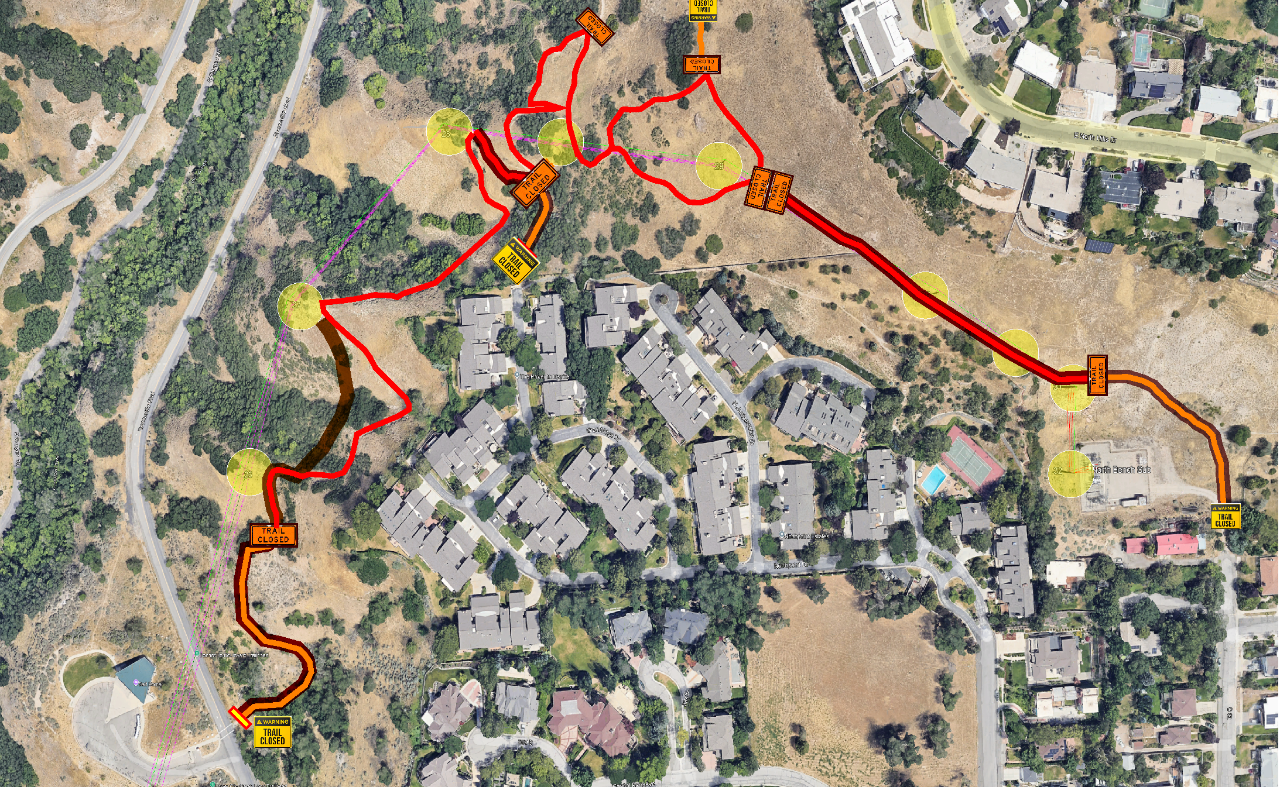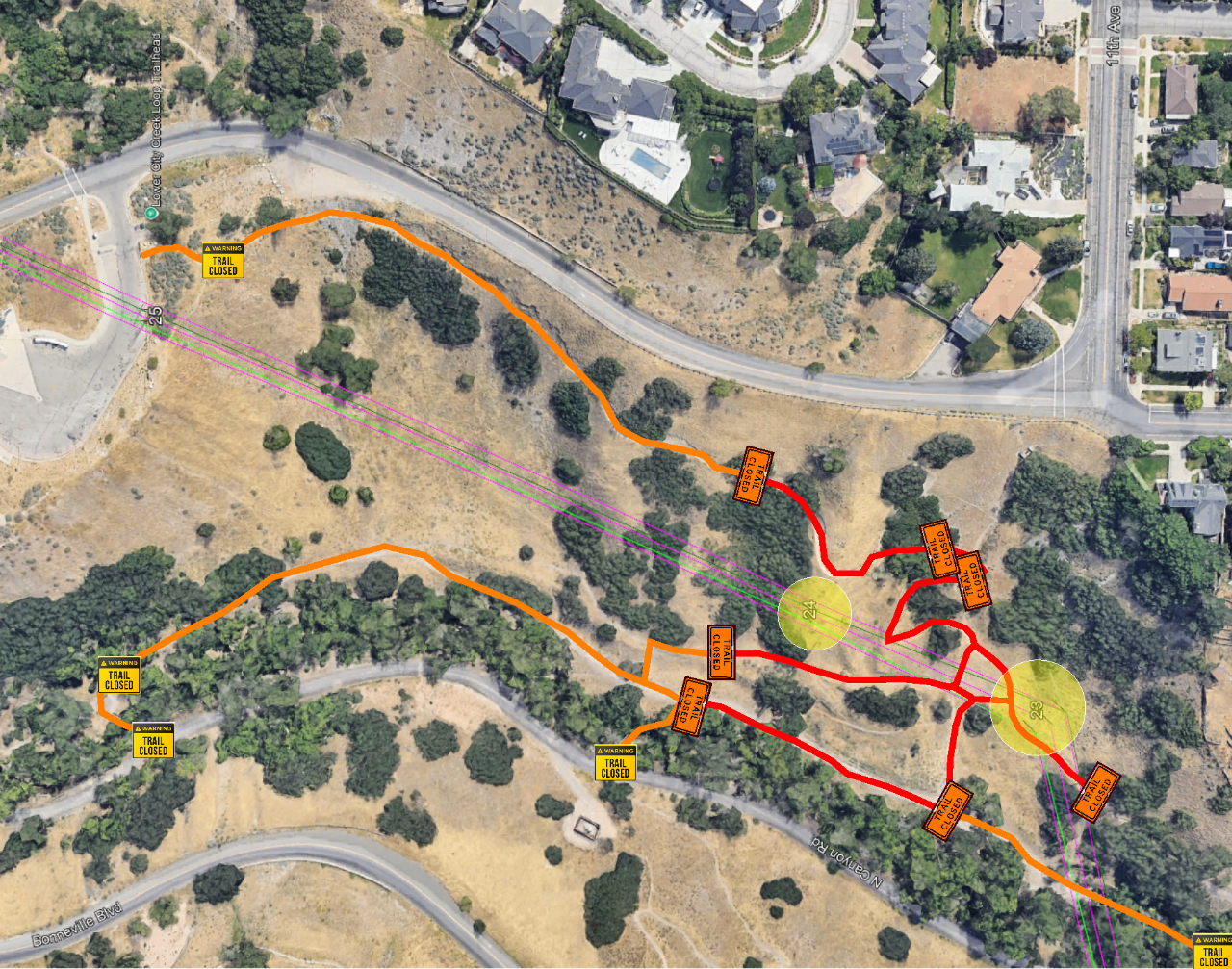Salt Lake City Foothills wildfire mitigation project
Rocky Mountain Power has been diligently working on a transmission and distribution line project aimed at mitigating wildfire risk along the wildland-urban interface areas in the foothills of Salt Lake City. This project underscores the company’s commitment to providing safe, reliable and efficient energy to its customers while addressing critical infrastructure needs.
The primary focus of this initiative is the Transmission Project 46-kilovolt Line Rebuild, which involves replacing aging wooden 46-kilovolt structures with modern 138-kilovolt weathering steel structures. The upgrade spans from the Capitol to the North Bench area, including G Street, Memorial Grove, and Warm Springs Park. Gerard Street and 200 West will also be affected. These new structures are engineered to improve safety, reliability, and long-term durability.
Construction is scheduled to begin in September 2025, with completion anticipated by early spring 2026. Once pole replacements are complete, restoration efforts will follow, including reseeding, trail restoration, and mitigation of any environmental impacts. Rocky Mountain Power will continue to coordinate with Salt Lake City to identify and address areas requiring further attention, ensuring the project’s long-term success and minimizing impacts to the community.
Area: Capitol to North Bench which includes G Street, Memorial Grove, Warm Springs Park, Gerard Street and 200 West.


Rocky Mountain Power’s Wildland Fire Protection Plan
In May 2024, Rocky Mountain Power filed its updated Wildland Fire Protection Plan with the Utah Public Service Commission. The plan represents the response in Utah to increased wildfire risk in the Western U.S.
Rocky Mountain Power has closely followed the actions taken by other regional utilities and has created its response designed to meet Utah’s specific wildfire risk profile.
The plan identifies fire high consequence areas, or places where a higher likelihood of wildfires exists near population centers. It proposes enhanced environmental monitoring systems in those areas, including soil moisture monitors, enhanced vegetation management guidelines, more frequent inspections, new operational practices and extensive system hardening measures. The system hardening measures take various forms, including installing non-combustion fuses, covered distribution lines, steel poles, fire-resistant pole wraps or coatings for wood poles, and, in certain cases, the complete reconstruction of a given line.
Why reconstruct these lines in the Foothills of Salt Lake City?
Transmission lines located in a designated fire high consequence area, with an average pole age of 45 years or older, were identified as candidates for wholesale reconstruction.
One line identified for near-term reconstruction under the Wildland Fire Protection Plan protocols is the line extending from the Company’s Capitol Substation, which is at the southeast corner of Warm Springs Park, through the Marmalade and Capitol Hill neighborhoods, through the Foothill area, above (northeast of) the University Hospital, and terminating immediately North of Red Butte Canyon Road, adjacent to Red Butte Garden. The project will not affect Red Butte Garden. See project map.
This line meets the standards for reconstruction outlined in the Wildland Fire Protection Plan and is quite close to many homes, businesses, and medical and institutional buildings.
What will the new transmission structures look like?
Crews are replacing the aging wooden 46-kilovolt structures with new 138-kilovolt weathering steel structures that will be an average of six feet taller than those currently in place. There is the possibility that the poles could be replaced not pole-for-pole but in some smaller number, and though the poles themselves will be taller, except for structures located at points where the line changes directions, they will not be appreciably larger in diameter. And the conductors themselves will be higher and, therefore, less visually obtrusive.
How will the new lines mitigate wildfire risk to area residents?
By replacing older wood poles with the new weathering steel, we will reduce the flammability of the structures. The new lines will include optical ground wire, which provides a fiber optic communication path between substations, so that electrical protection devices can operate within milliseconds, as opposed to seconds, ensuring that far less energy is released to the ground in the event of a fault. This reduces the likelihood that power lines will be an ignition source that causes a wildfire.
Although over 90% of the project described above is located in the fire high consequence area in the Foothills, a small percentage of the line goes through neighborhoods because transmission lines run from one substation to another, e.g., from the North Bench Substation, through Marmalade, and to the Capitol Substation. Rocky Mountain Power cannot achieve the plan’s mitigation goals for the section of that line in the fire high consequence area without replacing the entire line, both the section in the designated high-risk area and the sections which go through neighborhoods.
How will this impact my property?
Importantly, the project is a reconstruction project with no change to the alignment of the current 46-kilovolt line, so to the extent that a given property’s value may be affected by the presence of a transmission line, those effects already exist. Most of the line is either in the public right of way, i.e., typically in the park strip, or on City- or University-owned land, across which Rocky Mountain Power has private utility easements. Only in a few cases do the line traverse private residents’ properties, and easements exist that allow the company to maintain and upgrade its facilities.
Do electrical lines affect health?
All power lines in our system are built to meet or exceed the National Electrical Safety Code standards, which is the foundation for utility safety standards. The safety of our community is the primary consideration in the design and installation of poles and wires. For more information from the National Institute of Environmental Health Sciences on electromagnetic fields, please visit the NIEHS's website.
Route map
Salt Lake City Foothills Transmission Route Map